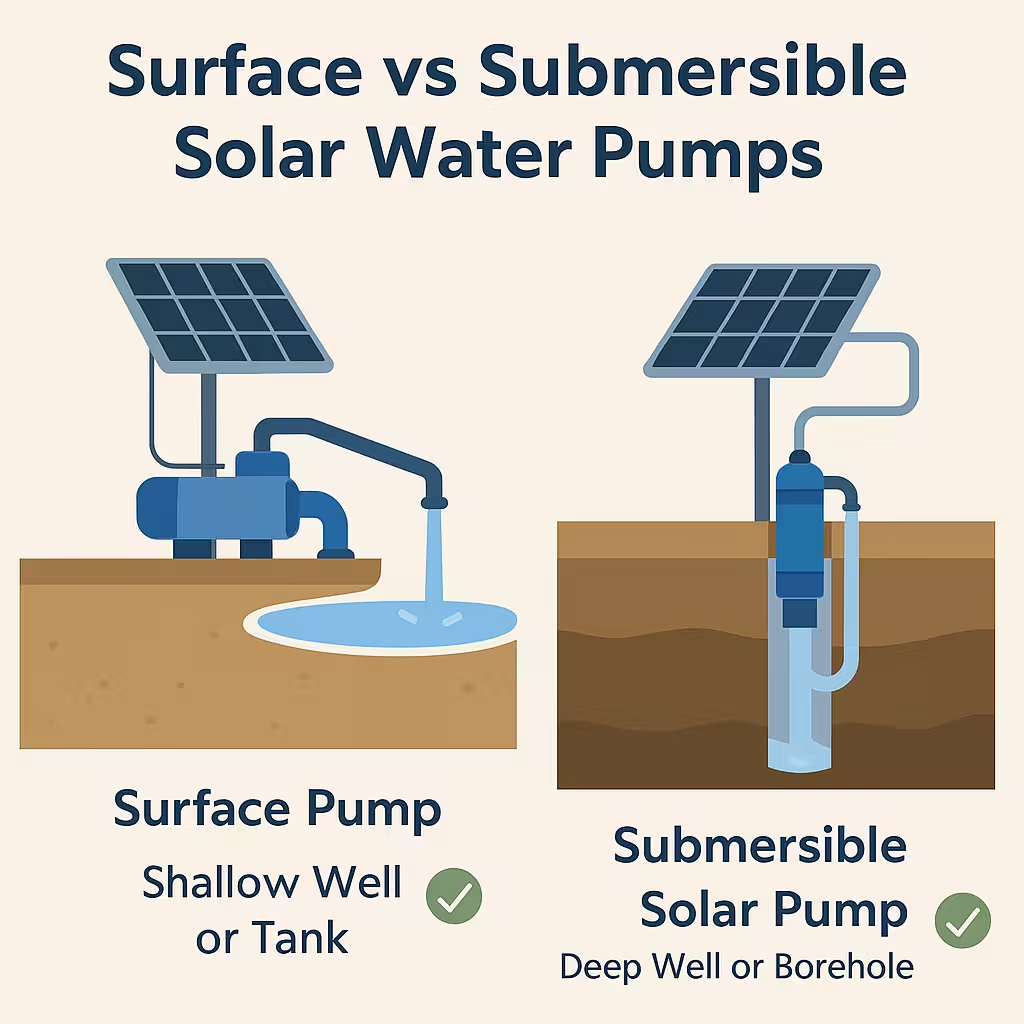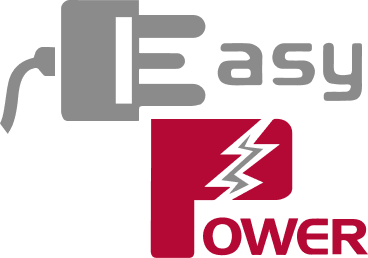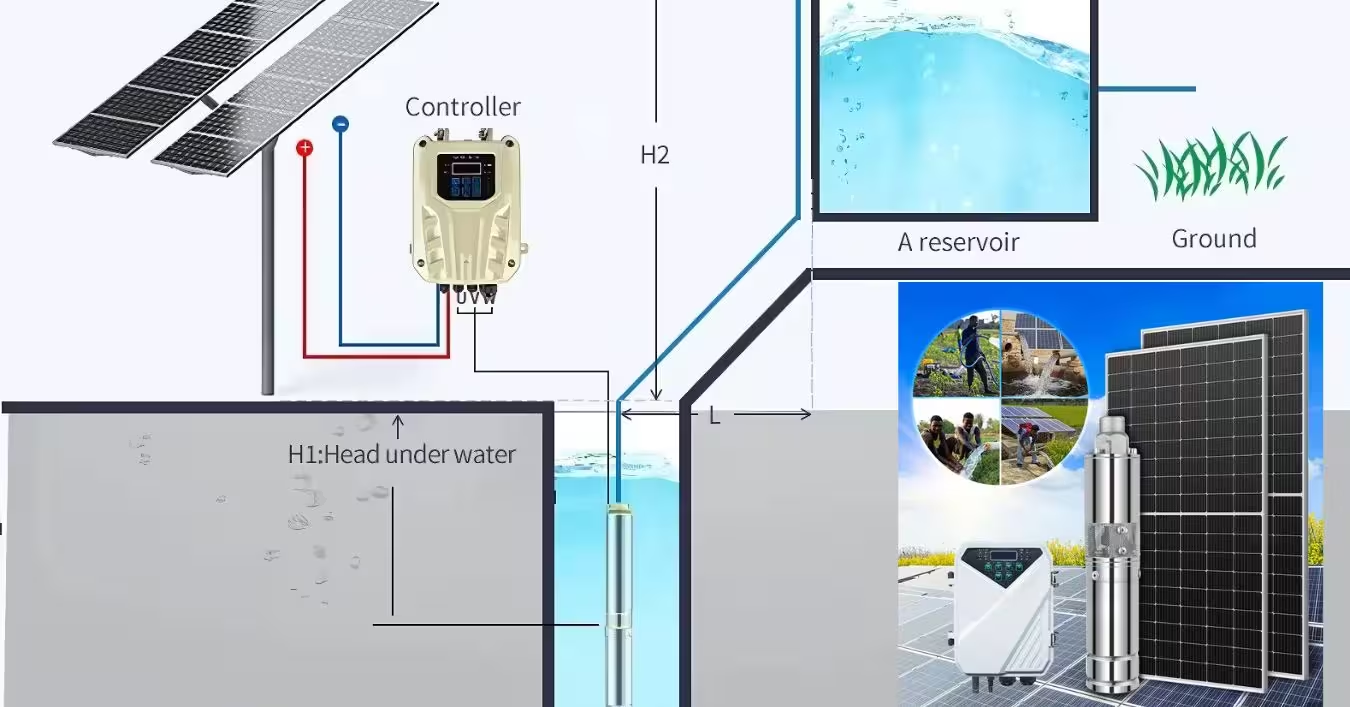Choosing the right solar water pump can be frustrating.
You’ve got water in the ground or a nearby source — but pumping it reliably without sky-high fuel bills, broken-down pumps, or wasted money on the wrong setup is the challenge.
You’re not alone.
We’ve helped hundreds of Ugandans — from farmers to schools to home owners — make the switch to solar.
And most start with the same question:
“Which solar water pump should I choose?”
This guide breaks it down — clearly, simply, and from the lens of real customer struggles.
Why Choosing the Right Solar Water Pump Matters
Let’s be real.
A lot of people in Uganda are:
Tired of unreliable power (UMEME blackouts)
Burning fuel daily for water pumping
Losing crops due to poor irrigation
Wasting money on low-quality or wrongly sized pumps
One farmer in Soroti spent over UGX 2.8M replacing two undersized pumps in 6 months.
All because no one told him how to size the pump to match his borehole depth.
Avoid that.
📰 This article from Observer Uganda highlights how solar pumps are being rolled out to improve rural access and cut operating costs for farmers.
Step 1: Understand Your Water Source

Choosing the right solar water pump starts with knowing your water source:
Borehole (deep well) → Needs a submersible solar pump
Shallow well, river, or tank → A surface solar pump works fine
📍 Learn more: Submersible vs Surface Solar Pumps – What’s Best for You?
Step 2: Measure Vertical Lift & Distance
The higher and further your water must go, the stronger your pump needs to be.
You need to know:
Vertical lift (how high water must be pushed)
Horizontal run (how far it must travel through the pipe)
Pain Point: A clinic in Fort Portal installed a pump that couldn’t push water up to their roof tank.
Patients had no water for 3 days until they upgraded to a properly rated pump.
Step 3: Estimate Daily Water Usage
Don’t guess.
Match the pump to your actual needs.
Typical Daily Needs:
Home: 500–1,000 litres
Farm: 1,500–3,000 litres
Livestock: 2,000 litres+
School/Hospital: 5,000 litres+
Big mistake? Choosing a pump based only on pipe size.
Flow rate matters.
🌾 According to NEFCO’s report on Uganda, properly sized solar pumps are helping farmers grow more with fewer resources and less reliance on expensive fuels.
Step 4: Match Pump Power with Solar Panel Size

Every solar pump needs the right energy input.
Get this wrong and either:
Your pump won’t run consistently
Or your solar panels are oversized, wasting money
✅ Use this rough guide:
Small pump (home) – 150W–250W panel
Farm pump – 300W–500W
High-lift systems – 600W+ or hybrid
📍 Need backup? See our Power Backup Systems for Solar Pumps
Step 5: Plan for Maintenance & Warranty
This is where many people get burnt.
Pain points we’ve seen:
“Pump failed after 3 weeks, no support”
“No warranty, no refund”
“No one to service the system”
Always choose:
Trusted solar brands
Clear 1–2 year warranties
Easy access to spare parts
📦 At Easy Power, all our pumps come with support and are installed in just one day.
Check out our full solar pump solutions here
🛠️ Weis Engineering also provides solid insights on the design, operation, and performance expectations of solar pump systems in Uganda.
Real Story: A Hotel in Jinja
They needed water pumped from a 60-metre deep well to a rooftop tank.
Their diesel pump cost UGX 200K/month to run.
We installed a hybrid solar pump with backup, sized for their peak demand.
Result?
Running costs dropped by over 80%, and the system paid for itself in less than 8 months.
Common Mistakes to Avoid When Choosing a Solar Pump
Let’s save you from the top 5 headaches:
❌ Skipping a site survey
❌ Choosing based on price instead of specs
❌ Ignoring elevation and tank height
❌ Forgetting solar panel compatibility
❌ No plan for spare parts or servicing
Choosing the Right Solar Water Pump: Final Thoughts
Choosing the right solar water pump isn’t just about specs — it’s about solving real pain points.
Do it right, and you get:
Reliable water supply
No more diesel stress
Peace of mind
Do it wrong, and you’ll lose money, water, and time.
FAQs: Choosing the Right Solar Water Pump
Measure the depth, then choose a submersible pump rated higher than your water level. Ask for help sizing both the pump and solar panel.
Yes, though at reduced capacity. You can also add batteries or hybrid setups to keep pumping during bad weather.
Very little. Clean panels monthly, check filters, and book a technician once or twice a year.
No. Boreholes need submersible pumps because of the depth and water pressure needed.


